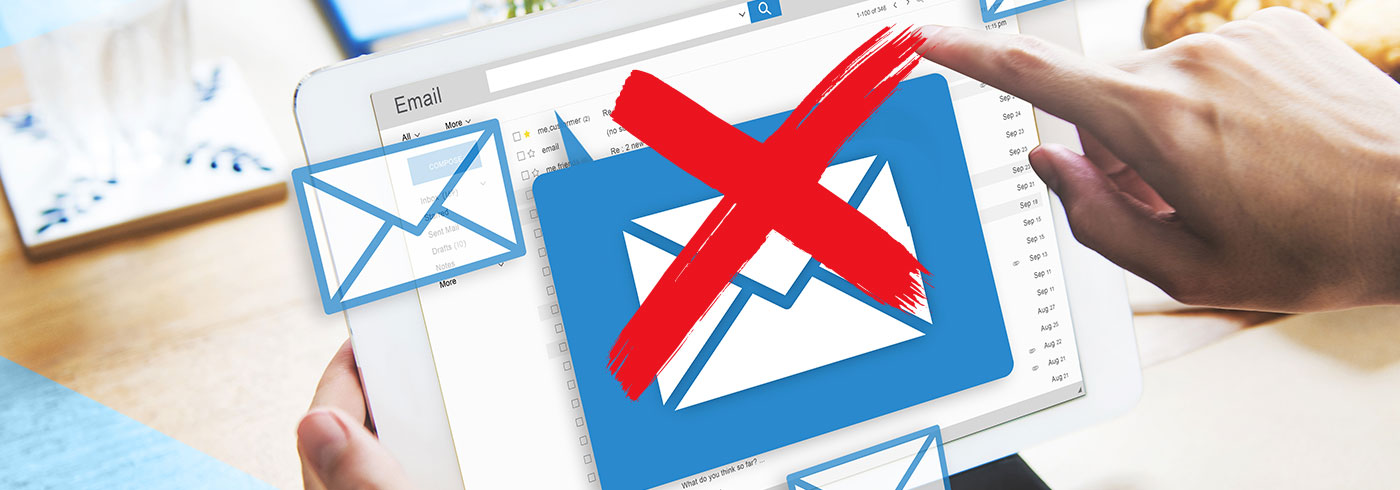We know seeing a high bounce rate on a monthly email marketing report is frustrating for you and your client. What went wrong? Well, the reality is that an email can bounce for a variety of reasons, all of which are typically out of our control. Let’s take a look at what an email bounce is, the types that can occur, and what your client can do to help prevent them.
What Is a Bounce?
A bounce happens when an email is undelivered. A bounce rate is calculated by the number of bounced emails divided by the number of sent emails. If 10,000 emails get sent out and five bounce, the email will have a bounce rate of 0.05%.
Low bounce rates from 0.01%-1% are normal, but consistent high bounce rates at 5% or more can cause deliverability issues. Email servers deem these accounts untrustworthy and begin blocking future emails automatically. There are two main types that contribute to these bounce rates.
Most Common Types of Email Bounces
A hard bounce is when an email is not delivered because the recipient’s email address is invalid. This could be because the domain name doesn’t exist or is unknown. For example, if a recipient leaves their company and their email address is removed from the system, the email will bounce. Email addresses that produce a hard bounce are automatically removed from most email platforms to prevent consistent high bounce rates.
A soft bounce is when an email is not delivered because, even though the email address is valid, there is an issue with the recipient’s email server. This could be because their inbox is full, their server is down or the message was too big.
Other types of email bounces such as DNS failure, blocked email, auto-response and more are less common.

What Your Client Can Control
Email bounces are largely out of our control, but there are a few things your client can do when putting together an email list to help prevent them.
- Allow recipients to opt-in to their email marketing campaigns
- Your client can start a list by asking for customer emails at checkout, providing a sign-up form online or using their sales database. These people are already interested in their business and are more likely to interact with their emails, are less likely to report them as spam and are less likely to bounce.
- Use a “from” email address that has the same domain name as their website
- Free email addresses such as Gmail, Yahoo, Outlook and others can cause deliverability issues. Servers may see these addresses as phishing scams and send your email to spam or block them completely.
- Authenticate their email domain
- Like using a “from” email address that is the same as their website domain, verifying their email domain prevents servers from thinking they are spamming or phishing recipients. DMKIM, DMARC and SPF records can be added to the domain’s DNS records to authenticate it. Your client should contact their email provider, IT person or website team for more information.
Although there is no way to fully prevent emails from bouncing, we hope this blog gives you and your client a better understanding about why they happen and the steps that can be taken to keep bounce rates low. Contact our team with additional questions!